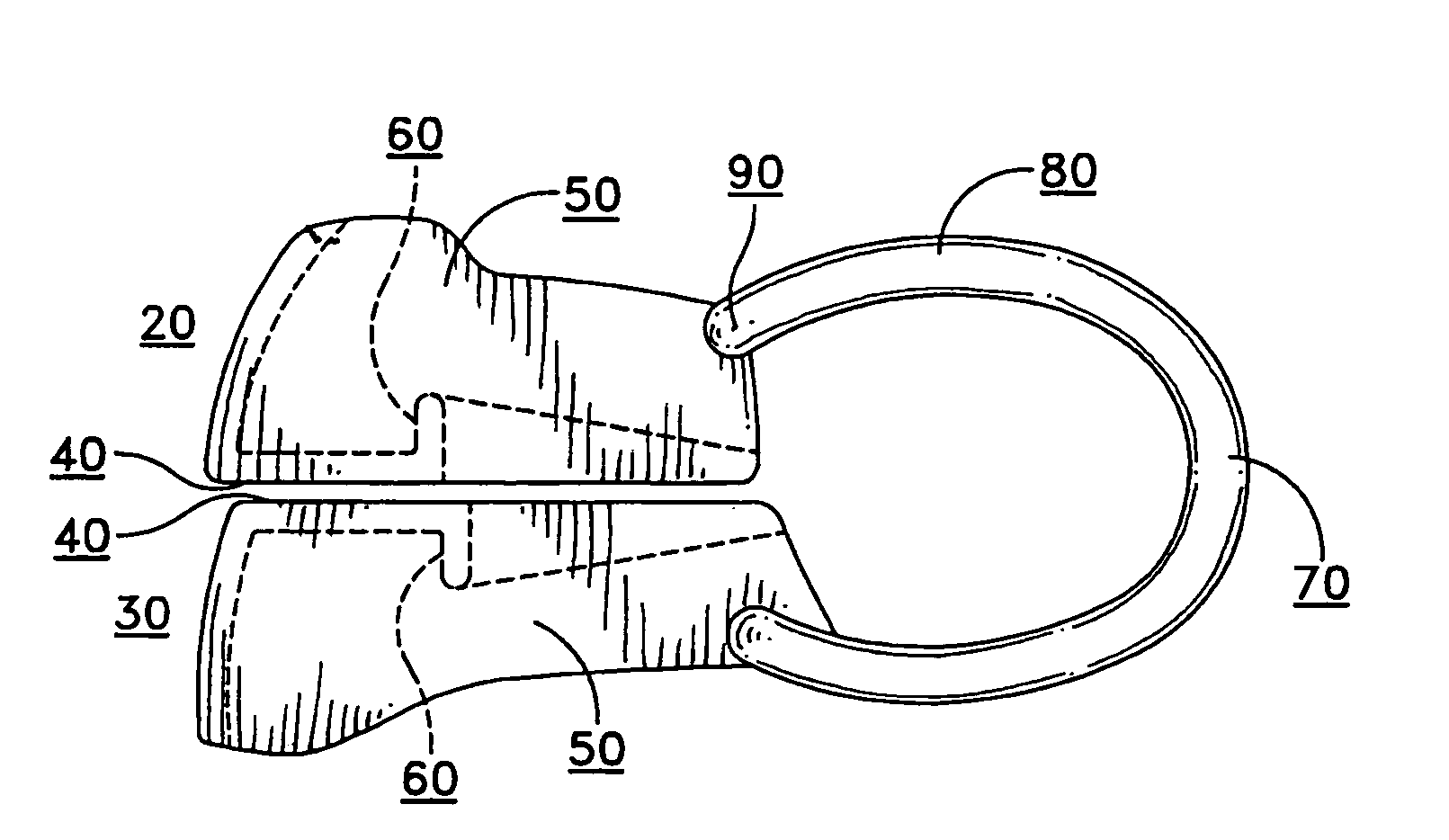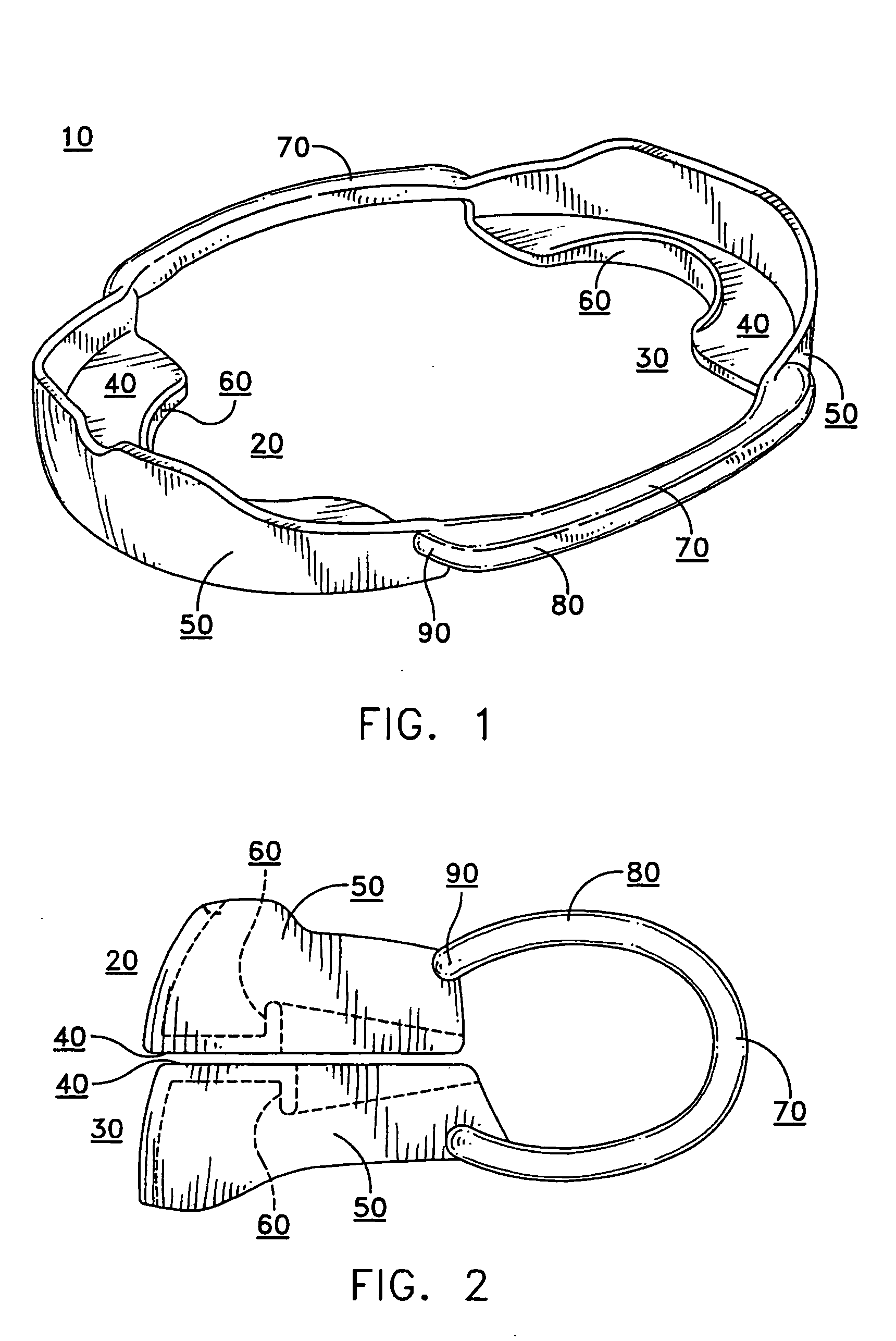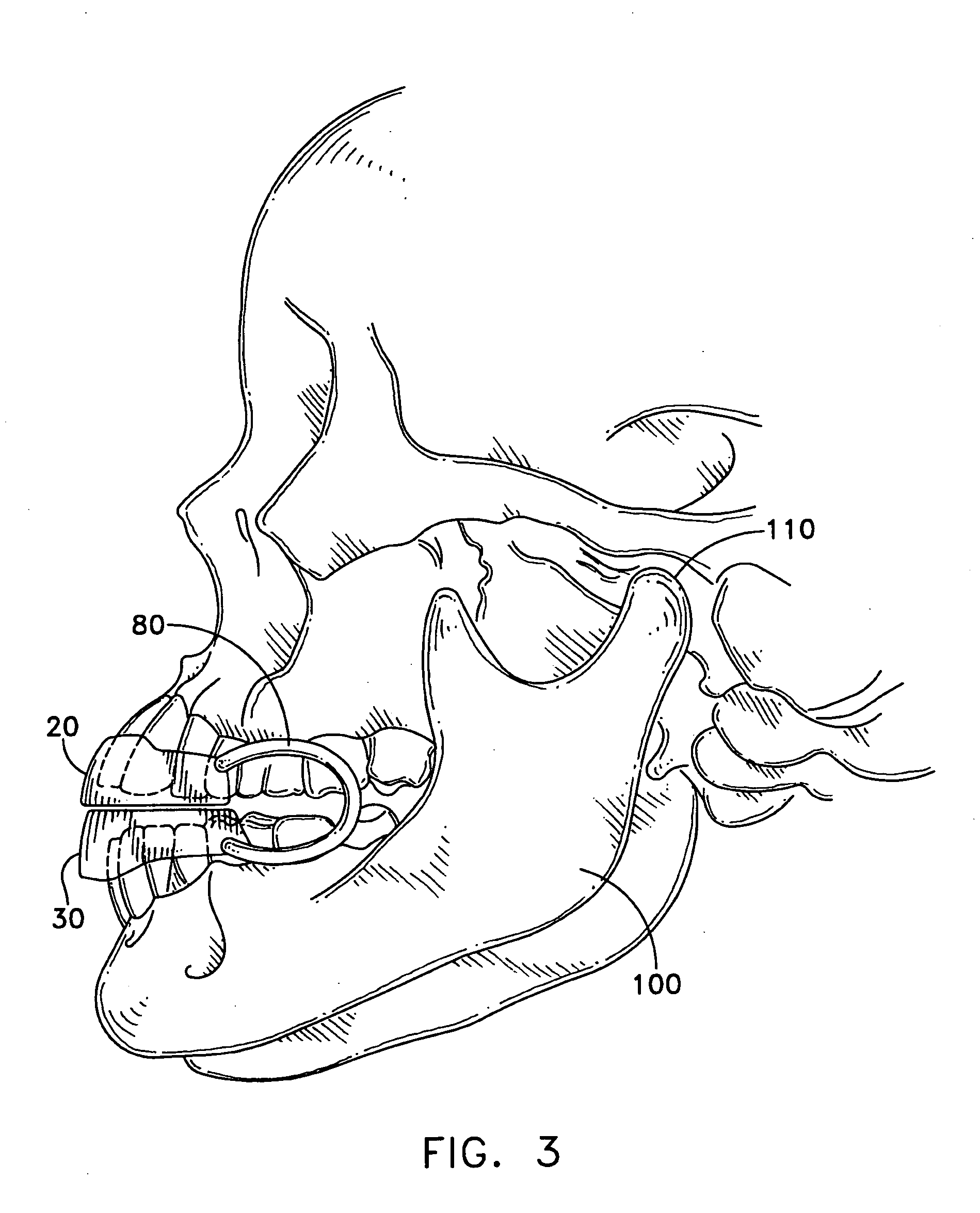Anterior sextant dental bite tray apparatus
a dental device and anterior sextant technology, applied in the field of dental devices, can solve the problems of inhibiting orthodontic tooth movement and correction, gores' not revealing a device covering only the anterior sextant of the arch, and device disclosed in gores would not aid in deep bite correction, etc., to achieve the effect of reducing the thickness of the material and not inhibiting the movement and correction of orthodontic teeth
- Summary
- Abstract
- Description
- Claims
- Application Information
AI Technical Summary
Benefits of technology
Problems solved by technology
Method used
Image
Examples
Embodiment Construction
[0017]FIG. 1 illustrates an exemplary version of an intraoral, flexible, hinged appliance according to the invention. The complete device, 10 comprises an upper 20 and lower 30 bite protecting tray connected with two flexible bands 80. Each bite tray is comprised of a base 40 an outer wall 50 and an inner wall 60. FIG. 1 depicts the device in its uninstalled state with the flexible bands 80 fully relaxed. FIG. 2 depicts the device as it would be worn in the mouth, with the flexible bands flexed into a U shape. The resilient bands 80 are connected 90 to the outer walls 50 or extensions of them 55 toward the back of the device.
[0018] The resilient bands may have a somewhat thinner section at the middle 70. This thinner section allows the upper 20 and lower 30 bite trays to more easily align themselves with teeth that do not close properly (malocclusion), by enabling the trays to slide forward or rearward or side to side relative to each other, to accommodate the initial malocclusion....
PUM
 Login to View More
Login to View More Abstract
Description
Claims
Application Information
 Login to View More
Login to View More - R&D
- Intellectual Property
- Life Sciences
- Materials
- Tech Scout
- Unparalleled Data Quality
- Higher Quality Content
- 60% Fewer Hallucinations
Browse by: Latest US Patents, China's latest patents, Technical Efficacy Thesaurus, Application Domain, Technology Topic, Popular Technical Reports.
© 2025 PatSnap. All rights reserved.Legal|Privacy policy|Modern Slavery Act Transparency Statement|Sitemap|About US| Contact US: help@patsnap.com



